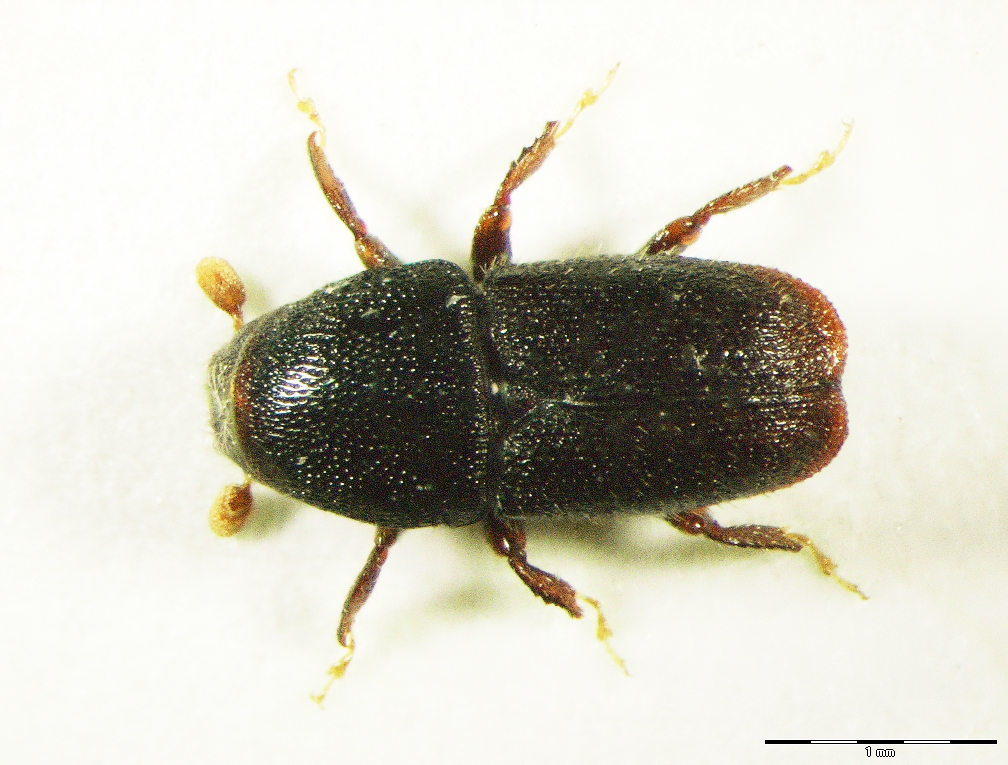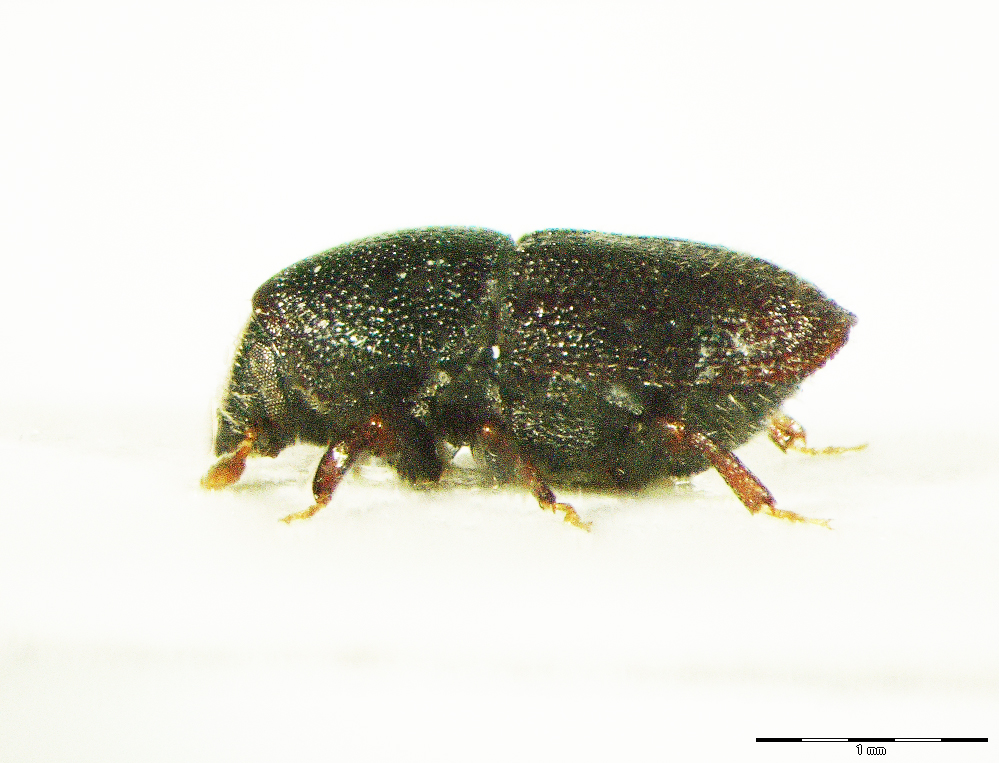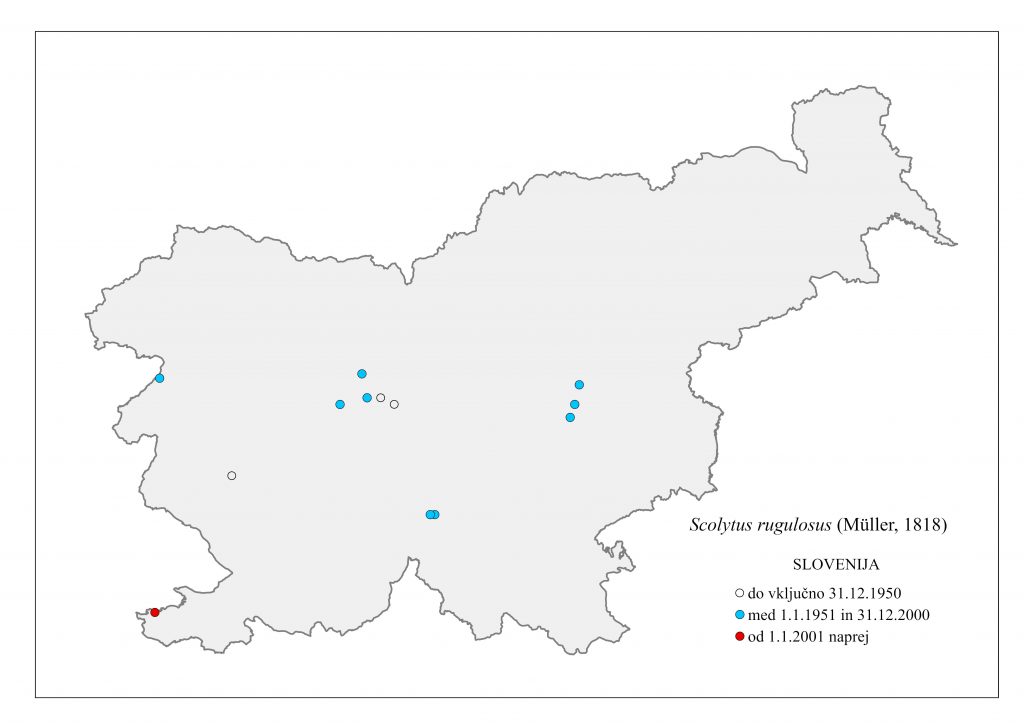32.08. Scolytus rugulosus (Müller, 1818)
Presence
E: AB AL AU AZ BE BH BU BY CR CT CZ DE EN FI FR GB GE GR HU IR IT LA LT LU MA MC NL NR NT PL PT RO SK SL SP ST SV SZ UK YU »Caucasus«
N: AG EG- MO TU
A: CY ES GAN IN IQ IS KZ LE MG PA SA SY TR WS XIN
NAR
NTR
ORR
Figure 162: Scolytus rugulosus, dorsal, lateral (Photo: Maja Jurc)
Older catalogs and keys – citations of name
Grüne 1979: Scolytus rugulosus (Müller, 1818); Freude, Harde, Lohse 1981: Scolytus rugulosus Müll.; Titovšek 1988: Scolytus rugulosus (Müller); Pfeffer & Knížek 1993: Scolytus rugulosus (P. W. J. Müller, 1818); Pfeffer 1995: S. rugulosus (Müller, 1818).
Figure 163: Scolytus rugulosus, distribution map according to historical and recent data
Ecology and presence in Slovenia
The species is distributed in central and southern Europe, the southern part of northern Europe, the northern Caucasus, the Crimea, western Siberia, Asia Minor, northern Africa, and the Nearctic, Neotropics and Orientals. Widespread in Slovenia, except in the NE part of Slovenia, but not common (Figure 163). Hosts include many species of fruit and forest trees in the Rosaceae family: Amelanchier ovalis, Aronia rotundifolia, Cotoneaster multiflora, C. pyracantha, Crataegus melanocarpa, C. orientalis, C. oxyacantha, Cydonia vulgaris, Frangula alnus, Mespilus germanica, Persica vulgaris, Pirus communis, P. malus, Prunus dulcis, P. angustifolia, P. avium, P. armeniaca, P. cerasus, P. mahaleb, P. padus, P. serotina, P. spinosa, Rhamnus catharticus, Sorbus aria, S. aucuparia, S. torminalis, Rosa spp. and rarer species of the genera Betula, Alnus, Ulmus, Corylus and Fagus. In Slovenia, the species has been frequently found on Malus domestica, once also on Amelanchier ovalis and Prunus sp.. Monogamous species, develops 1-2 generations per year, swarms in June and July. The maternal tunnel system is longitudinal uniramous. Length (adultus) is 1.4-3.2 mm. The body is black, the elytra are red-brown with dark spots in the furrows and a dark medial band (Figute 162). Research shows that S. rugulosus is frequently parasitised by many parasitoids in forests, and therefore its population densities are low.



